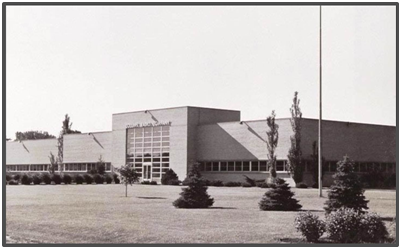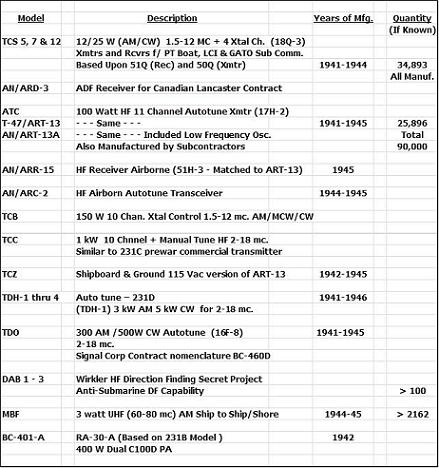The War Years
Prior to World War II, Collins Radio could have been described as a small start-up company in rural Iowa. The company had grown from a home basement manufacturing operation (1933) to a technically successful, but financially struggling, startup by early 1941. Life at Collins had been driven by technical innovation, rapid model innovation, and a wave of increasingly larger manufacturing facilities – although still quite modest compared to the then manufacturing giants RCA and Westinghouse. In early 1941, employees numbered in the 200 range. But, war was looming and everyone knew it. While suspicious of Japan, the big fear of US involvement in the flaring war centered on Europe. Government funded increased manufacturing capacity was available and Collins had the insight to take advantage of this. By early 1941, the newly constructed Main Plant on 35th Street was occupied. This added 61,000 square feet of manufacturing capacity and this would soon be doubled and again tripled by the end of the war. Employment during 1941 was doubled to over 500 employees and Art was getting ready for what he saw coming.
Main Plant on 35th Street in Cedar Rapids, Iowa
December 7, 1941 changed the game. Suddenly, following Roosevelt’s and Congress’s declaration of war on Germany and Japan, the US was in two wars. One minute – literally – Collins Radio was a commercial Communications and Broadcast transmitter manufacturer with 500 employees, 30 some models in production and $2.1 M sales. The next minute all commercial production unrelated to the war effort was shut down by an act of congress. But Collins was ready! They not only had a new very much larger and almost empty manufacturing facility, but they had many technical innovations on their platter to offer the Armed Forces. The Autotune, the Pi Network, the robust and reliable design and construction would make them a major contender for first Navy, and then Army Air Corp, contracts. Many people associate the war production effort at Collins Radio with the ATC/AN/ART-13 family of airborne HF transmitters and the TCS “PT Boat” Transmitters and Receivers. In fact, there was much more depth to what was produced by Collins. During the war, Collins Radio produced significant amounts of at least 22 different models of transmitters and receivers – Many of them based upon commercial models that were available right before the onset of war. The table below describes most of these models, but is by no means claimed to complete.
It is widely acknowledged that the frequency agility, reliability and tuning flexibility/stability (Corregidor story) of the Collins designed and supplied equipment provided Allied Forces with a strategic advantage, particularly during the first few years of the war. In fact, Japanese aircraft command communications equipment was so poor at the beginning of the war, that they often turned them off and relied upon hand signals and flag signal for tactical communication. The strategic advantage offered by the Collins equipment is credited with not only saving many lives, but also shortening the war. During the war, Collins would grow to occupy most of the available space in Cedar Rapids, and would ship over $100M worth of equipment to the US and British Forces. Employment would soar to almost 4000. Then, in 1945, when the war ended – Collins Radio had a huge problem. They were a budding manufacturing giant; The company had almost 4000 employees; They were one of the technology leaders of the world, and they had no business on the books. An Act of Congress canceled all military contracts at the end of the war. Collins now had its next challenge – Downsize to Survive. See the Postwar Period for the next successful chapter in the history of Collins Radio.
– – – – – – – – CCA – – – – – – –
Note: The images and text used in these pages are copyright 2013 protected, are restored and written by the Collins Collectors Association or its representatives, and may not be used in any other commercial or website applications. They may be downloaded and used privately – not for publication or internet use.
- CCA COLLINS HISTORICAL ARCHIVES
- The Pre War Years
- The War Years
- ART 13 - Description and Disassembly
- ART 13 AutoTune Adjustment Part 1
- ART 13 AutoTune Adjustment Part 2
- ART 13 AutoTune Function
- ART 13 Introduction and History
- ART 13 Service Tips
- ATC & AN/ART-13, JAN T-47/ART-13 TRANSMITTER
- Post War Broadcast / Commercial
- The Black Boxes
- The Grey Boxes
- The “S” Word or Solid State

